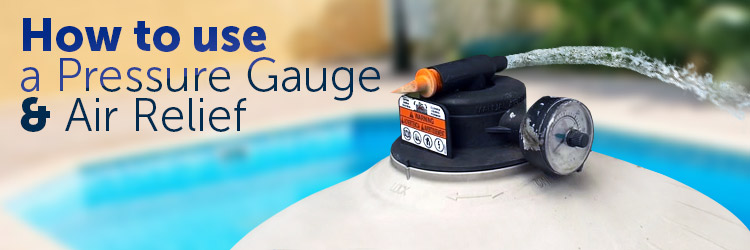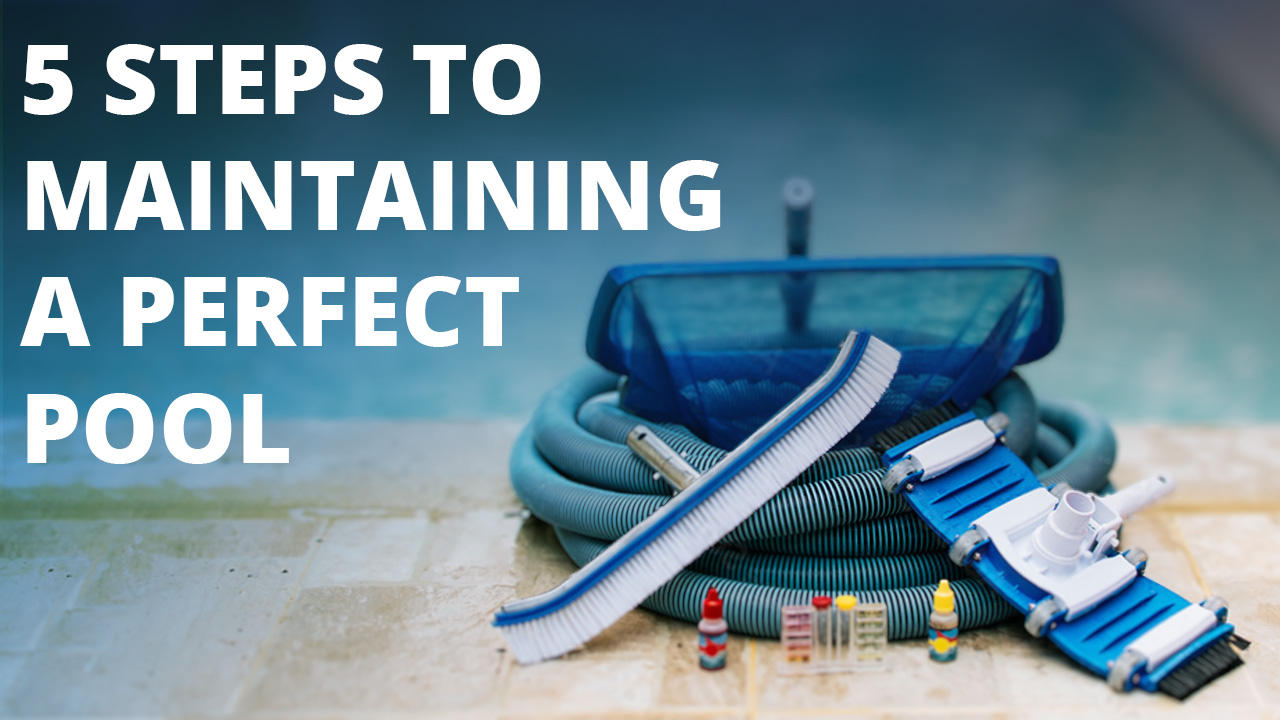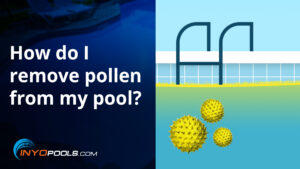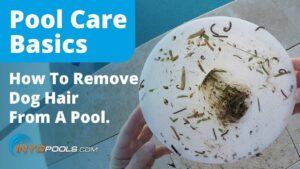Owning a pool is mostly fun but maintaining a perfect pool can be a daunting feeling for a new family. Over the years, we’ve learned that one of the greatest concerns for new pool owners is the ability to maintain it themselves. However, we are here to say that owning a pool can be both fun and stress-free.
Although no two pools are the same, there are 5 steps to maintaining a perfect pool that every pool owner can follow.
Maintaining A Perfect Pool In 5 Steps
Step One: Test And Balance Your Water
The first important thing about maintaining a perfect pool is to test your water and balance it, if necessary. For most pool owners, we recommend that they test their water weekly. However, you might need to test your pool multiple times a week if your chemical levels are extremely off.
In most cases, it is more convenient to test your pool water yourself and for this reason, we recommend that you equip yourself with an at-home testing kit. That way you do not have to transport your water to a local pool store. However, in the event that you do not have a kit at home, you can take your water sample to a local pool store for testing.
Related Articles
– How To Choose A Pool Test Kit
– Pool Water Testing For Dummies
– What Should I Use To Test My Pool Water?
Step Two: Clear Any Debris
After you test and balance your pool water, the next thing you want to do is clear the debris. You want to check your pool water, skimmer, and pump basket for debris. Failing to move debris can affect your normal filtration and can cause chloramines to form.
In addition to an at-home chemical testing kit, we also recommend owning basic cleaning accessories. This includes a leaf net, a skimmer, and a telescopic. This allows you to skim your pool’s surface for large debris, leaves, and bugs.
Related Articles:
– How To Manually Vacuum A Pool
Step Three: Check Your Filter Pressure
Did you know that you can determine a lot about your pool’s health by keeping an eye on your filter pressure? When analyzing your pressure, it is important to know what your pressure is when your pool is in pristine shape. When your filter is dirty and/or needs to be cleaned or backwashed, you will notice that your filter pressure increases.
A good rule of thumb to remember is to backwash or clean your cartridge filter when your pressure increases by 10 PSI. By keeping an eye on this pressure, you can maintain a healthy filter. This is especially important when maintaining a perfect pool.
Related Articles:
– How to Use a Pool Filter Pressure Gauge and Air Relief
– Poolside Chat Episode #36: Is there a Minimum Filter Pressure (PSI)?

Step Four: Prime Your Pump
Next, you want to prime your pump. In short, priming your pump means purging the air out of your system. If your pump isn’t primed, it can cause a lot of unnecessary issues with your system. Too much air and not enough water will damage your pump and other pool equipment.
Related Articles:
– How To Prime A Pool Pump
– Determine Why a Pool Pump Won’t Prime
– How To: Fix Priming Problems In your Pool Plumbing
Step Five: Check For Leaks
Lastly, you want to check for leaks around your pool equipment. This includes your pump, filter, heater, and salt system. When it comes to your swimming pool, any type of leak is a recipe for disaster.
For example, one of the leading causes of premature motor failure is a faulty or old shaft seal. The shaft seal protects the motor from water damage. However, a faulty or damaged shaft seal will result in water seeping into the motor. In most cases, you will notice water leaking under the motor or pump housing. In the event that one of your pool equipment leaks, immediately find the remedy.
Typically, if you have a leak it means one of your seal, O-rings, or gaskets failed. We recommend starting there. Next, we recommend examining the interior and exterior areas of each piece of equipment. For a pump, I would check for cracks on the pump housing, strainer lid, diffuser, and impeller.













Leave a Reply